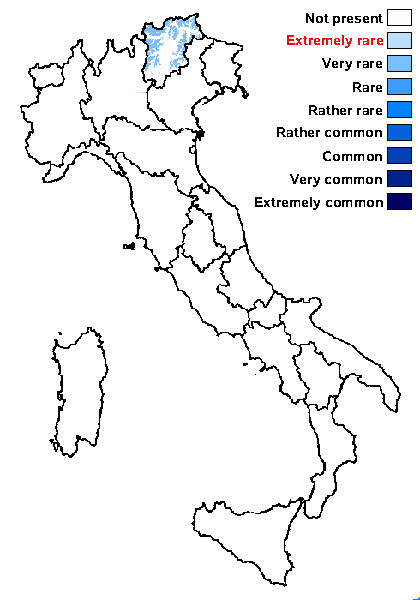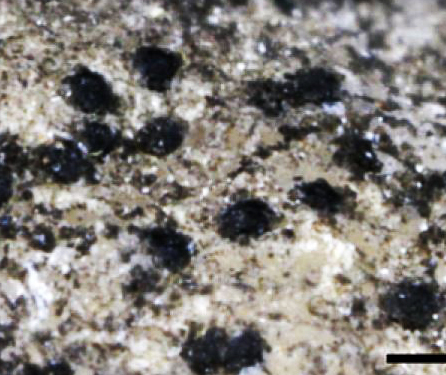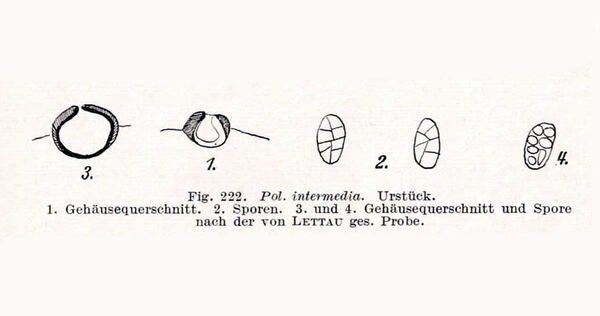Polyblastia intermedia Th. Fr.
N. Acta Reg. Soc. Sci. Upsal., vol. extra ord., 8: 24, 1877.
Synonyms: Polyblastia kernstockii Zschacke?
Distribution: N - TAA (Breuss 2024).
Description: Thallus endosubstratic to thinly episubstratic, smooth, whitish to cream-coloured. Perithecia black, 0.2-0.25(-0.3) mm across, with a depressed ostiolum, at maturity emergent, the lower part immersed in the thallus. Involucrellum well developed, 20-45 μm thick, distinct from exciple except in the ostiolar region, reaching halfway down the perithecium, adpressed except in the lowermost part, of intertwined, heavily sclerotized cells; exciple brown throughout in outer part, colourless in inner part, (10-)14-18 μm across, merged with the involucrellum in the uppermost part, paraplectenchymatous; hamathecium of periphyses and periphysoids, interascal filaments absent; periphysoids 34-44 μm long, c. 2 μm thick, sparingly branched in upper part; hymenial gel I+ red, K/I+ blue. Asci 8-spored, clavate, K/I-, fissitunicate, the wall thickened above, with a broad ocular chamber, dehiscent by extrusion of an endotunica to form a delicate rostrum. Ascospores submuriform, with 3(-4) transverse septa and 1 longitudinal septum, hyaline, ellipsoid, 16-20 x 7-10 μm, often with a thin gelatinous perispore (most evident in K). Photobiont chlorococcoid. Spot tests: K-, C-, KC-, P-, UV-. Chemistry: without lichen substances.Note: an arctic-alpine species of calciferous rocks with optimum above treeline, probably restricted to the Alps in Italy. Here the species is treated in a broad sense: the only Italian record refers to P. kernstockii.
Growth form: Crustose
Substrata: rocks
Photobiont: green algae other than Trentepohlia
Reproductive strategy: mainly sexual
Commonnes-rarity: (info)
Alpine belt: very rare
Subalpine belt: extremely rare
Oromediterranean belt: absent
Montane belt: absent
Submediterranean belt: absent
Padanian area: absent
Humid submediterranean belt: absent
Humid mediterranean belt: absent
Dry mediterranean belt: absent

Predictive model

Source: Sanja Savic & Leif Tibell. 2012. Polyblastia in Northern Europe and the adjacent Arctic. Symb. Bot. Upsal. 36,1.
Growth form: Crustose
Substrata: rocks
Photobiont: green algae other than Trentepohlia
Reproductive strategy: mainly sexual
Commonnes-rarity: (info)
Alpine belt: very rare
Subalpine belt: extremely rare
Oromediterranean belt: absent
Montane belt: absent
Submediterranean belt: absent
Padanian area: absent
Humid submediterranean belt: absent
Humid mediterranean belt: absent
Dry mediterranean belt: absent

Predictive model

 INDEX FUNGORUM
INDEX FUNGORUM
 GBIF
GBIF
 DOLICHENS
DOLICHENS



